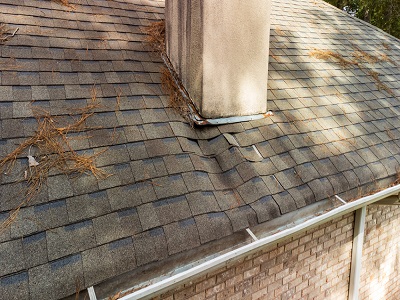
It looks like we are in for some bad weather this coming weekend from hurricane Ian. Keep this checklist handy for when the storm is over and call Florence Roofing Experts if you have roof storm damage. What can you do to your roof after a storm? This resource guide will help you understand the different types of roof storm damage. You can also learn the steps to take.
Types of Roof Storm Damage
Wind
Meteorologists classify hurricane-force winds as speeds of 74 mph and greater. Gale-force winds are speeds between 39 and 54 mph. These winds can cause visible damage to your roof. High winds can cause shingle damage, causing the roof deck, underlayment, and waterproofing material to be exposed to the elements.
Even if the storm isn’t that severe, wind gusts could cause the shingles to be lifted and then curled. The shingles are placed in a way that creates a watertight seal. However, if they are lifted or curled, this can cause roof damage.
Hail
Hailstorms are usually short-lived and last only 15 minutes. However, hailstones can cause damage to shingles or pockmarks on shingles. They can also knock out shingle granules. These granules protect your roof from sun and rain damage, but this can cause problems. Your roof’s aesthetic appeal can be affected by hail damage.
Standing water
Poor drainage can cause standing water problems on roofs after heavy rainstorms, particularly in unlevel areas. Clogged gutters can cause rainwater to build up under your shingles. This allows water to seep into the underlayment and roof deck.
Debris
Dependent on the severity of the storm, debris could end up on your roof. This can include small branches and larger tree limbs. Large objects can damage or dent the shingle’s surface, making it vulnerable to moisture intrusion. However, lighter branches might not pose as much problem.
This roof storm damage checklist will help you understand what kind of damage your roof might have sustained, and whether it needs to be replaced entirely or only part of it.
Schedule and conduct a Roof Inspection
Safety is always the first priority. To schedule an inspection with a professional roofing contractor and assist you in assessing the damage, contact them. Numerous roofing contractors will offer free inspections. They will be able to assess the roof for any damage.
Roof: Take a visual inspection of your roof. Walk around your home and note any storm damage.
Another possibility is that you have a great view from one of the windows. You can take photos and keep a list of your notes. This could be useful later in insurance. You should document any visible signs of storm damage, including dented, torn, or curled shingles.
Gutters, Vents, & Windows: Inspect your gutters and roof accessories to make sure there are no dents. You should inspect your windows for cracks, broken glass, and loose weather stripping.
Check the outside of your home for damage, such as missing fence posts or fallen tree limbs. Check for hail damage on flat surfaces like patios or decks.
Attic and Ceilings: Look out for water spots and leaks in these areas. Although your roof may appear unaffected from the outside, hail and wind can cause leaks that could lead to larger problems in the future. Water leaks and spots should be checked in ceilings, light fixtures, as well as your attic. To see into darkened areas, use a flashlight.
Hire a reliable, trustworthy roofing contractor
It is important to choose a roofing contractor that you trust. After a major storm, roofers and repair firms will be busy and might offer discounts or other deals to help you compete. It’s possible it is too good to be true if it sounds too good for it.
Roofing contractors are able to:
- A professional eye will assess the extent of your damage
- Give an estimate of repair costs
- Repair or replace your roof
- Talk to a trusted roofing contractor
When choosing a roofing contractor, it is important to be able to identify the key questions and look for what you should do. These are some tips that will help you:
- You should ensure that the roofer you are considering is licensed and insured. They also need to offer a strong warranty on the work they do.
- Make sure the roofing contractor can assess and estimate the damage.
- You can read online reviews of other people’s experiences with their services.
- Contact your Homeowners’ insurance provider
- It’s important to notify your homeowner’s insurance provider immediately if you discover significant damage to your house after a storm. They will be able to properly file a claim according to their requirements.
The company’s representatives will help you file a claim to get the appropriate compensation. This is based on your storm damage assessment notes and photos. To assess the extent of roof storm damage to your home, the company might send an inspector or assessor to your house.
Call now if you need help in fixing your roof after a storm.
Like our Facebook page for more great info about roofing services.
Florence Roofing Experts
Florence, SC 29501
843-212-7825
http://florenceroofingpros.com

No comments:
Post a Comment